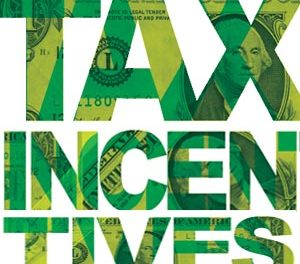In our last post, we wrote about the way that public safety costs dominate the City of Memphis budget to the detriment of services like parks, libraries, and community centers which are underfunded when compared to peer cities.
It’s been said that Memphis doesn’t have a fire department. It has an ambulance department. After all, MFD answers 12 times more ambulance calls than fire calls. The potency of fire station politics was demonstrated two years ago when an outcry from North Memphis residents kept a fire station open that by all rights should have been closed. (Recommendations to reduce and consolidate fire stations date back to the 2007 Deloitte Efficiency Study.)
According to that study and others, the size of the workforce for both Memphis Police Department and Memphis Fire Department is higher than comparable cities or any other major city in Tennessee. The budgets for them have climbed about $50 million in five years, and today, they are roughly $423 million a year. In other words, if police and fire departments remain off limits for efficiencies, Memphians should prepare for their city tax rate to climb and the cumulative tax rate for city and county taxes to crash through the mental barrier of $8.00.
But here’s the thing: there are forces that shape city budgets today that were set in motion decades ago. Essentially, the Wharton Administration and the City Council are still dealing with delivering services from city facilities that were located and built for a city that no longer exists. After all, within the 1970 city limits of Memphis, there are today 27% fewer people although the locations of many city facilities were decided back then and have not been changed.
Nothing Dense About Budgets
In other words, today, there are fire stations like the one in North Memphis that answer an average of one call a day. The neighborhood it serves today is dramatically different and has significantly fewer residents than when it was built. Meanwhile, community centers are located in areas that once had high densities, but instead, today have as many as 50% fewer people living in them.
Just think: in 1970, Memphis delivered services over 178 square miles with 623,988 people. The density was 3,500 people per square mile. Today, City of Memphis delivers services over 324 square miles with 653,450 people. The density is 2,016. In other words, because of the mistaken belief that annexation always accrued to the city’s benefit, the size of Memphis grew by an incredible 82% while density was being sliced by 40%.
More than anything, Memphis has a math problem. For those who are always thinking that Shelby County Government must just be better at managing money than City of Memphis, they should just check the numbers. The median value of a house in Memphis is $95,900, and for Shelby County, once the suburbs are added, it’s $132,700. It’s results in a huge difference in property tax revenues that gives county government a leg-up when it comes to putting together a budget.
Some people attempt to draw conclusions about city governments’ efficiency from the fact that Memphis’ property tax rates are higher than Nashville. But that too isn’t about management; it’s about math. If Nashville had the same house prices as Memphis – rather than about $165,000 – its tax rate would be as high as the cumulative city-county tax rate in Memphis. Or put conversely, if Memphis had the same house values as Nashville, its property tax rate would be about half of what it is now – $1.70 rather than $3.40.
It’s The Math, Stupid
Come to think of it, it’s worth mentioning that compared to Nashville or to Shelby County Government or to Germantown, Collierville, or Bartlett, City of Memphis delivers its services at the lowest per capita cost.
But back to budgeting, it plays out in City of Memphis within one of the most difficult frameworks for cities of its size. It operates within one of the most regressive state tax structures in the U.S., with roughly $40 million (the equivalent of 40 cents on the city property tax rate) taken off the top with tax freezes (PILOTs) for big business, and in which the poverty rate climbed 35% from 2000-2010.
All that said, no person in Memphis, particularly all those new members of the Memphis City Council, should look for their budget decisions to bring them much credit for making the hard choices and the tough decisions in an extraordinarily onerous environment. Every budget choice has winners and losers, every decision benefits somebody more than someone else, and every budget action has an equal and opposite reaction.
The depth of the fiscal challenge this year and in the coming years is likely to be compounded by an increased level of conflict and controversy (the mandate to find $70 million for pensions’ unfunded liabilities guarantees it), but operating within a democratic system of checks and balances, it’s a challenge at times to remember this is the way it was designed to be.
Join us at the Smart City Memphis Facebook page for daily articles, reports, and commentaries that are relevant to Memphis.






